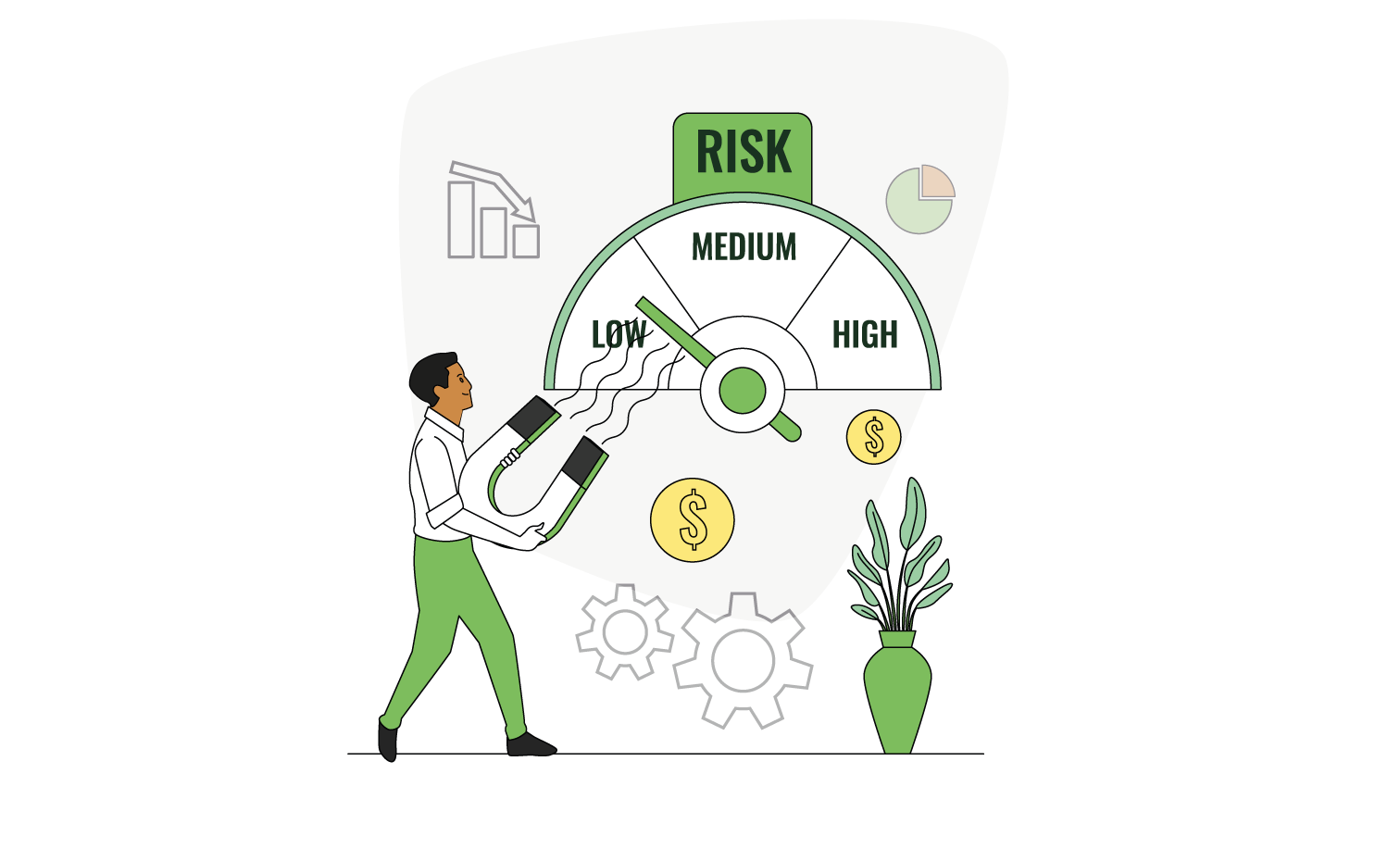The worth or the value of your money keeps on declining with time. Hence, one must invest a part or complete sum somewhere where it is easily accessible, safe, and provides some form of protection against inflation. It can be either in physical or financial assets. But as the list of options increases, the list of investment risks related to investments also increases.
Investment risks are defined as the probability or the likelihood of incurring losses instead of profits against a specific investment. It is, in a way, a measure of uncertainties and possibilities associated with any investment. There are many types of risk in an investment like market risk, reinvestment risk, foreign investment risks, concentration risks, credit risks, etc. that are getting covered in the dreams of earning profits over investments. It often includes the downside of investing money and is thus able to explain the financial losses that can occur due to investments.
While many people will tell you about the investment options, very few will overview the risks involved. Hence, to expand your financial literacy and give you independence in the field of investing, we’d like to highlight some of the most common investment risks that can be incurred with investments.
1. Market Risk
The market is as unpredictable as the weather or even more than that. Economic developments, exchange rates, inflations, and political and social policies are all considered while studying the market. All these factors impact the financial market. This, in turn, puts us at financial risk.
There are broadly three types of market risks-
a. Equity Risk: This type of risk is mainly involved in the share market. The price of shares of a company is dynamic and ever-changing. It depends on many factors and hence cannot be kept constant. With this comes the opportunity to increase money by increasing the shares’ valuation. But it also involves the risk of the declining value of profits with a drop in its share prices.
b. Interest Rate Risk: Interest rate risks generally come into play with bonds. It works similarly to equity risk, but the varying factor here is the interest rate instead of share prices. With an increased interest rate comes the loss as the value of bonds drops with rising interest rates.
c. Currency Risk: As we all must have heard and observed the volatility of the currency, we all can together vouch for the risk involved in currency exchange. When you own a foreign investment, you are prone to this risk as the value of your investment can change with the value of the currency.
2. Liquidity Risk
Liquidating assets is as important of a process as investing in assets. To put it simply, if we cannot get our money back when we need it — it is usually of no good use to us. E.g., A vast majority of Indians tend to invest their money into real estate, a highly illiquid asset class. It often involves a lot of time and energy to sell off a real-estate asset.
3. Concentration Risk
This is the most common risk that an individual investor usually faces. We all have options of putting all our eggs in one basket or distributing them across several. When we invest all our money in one type of investment, we place all our bets on that one. If it performs well, we make a profit. If that investment goes down, we incur a loss. We diversify our portfolio across different investments to decrease that risk of loss. Since the concentration of money in one place leads to high chances of loss, it is highly advised to have different investments across geographies and industries.
4. Credit Risk
Whenever we put our money into any investment, we inherently hope it will work in our favour. The credit risk involved with the investment makes it difficult to be entirely sure of the decision. Credit risk indicates the possibility of a company running into a financial crisis. One must evaluate the credit rating of the bond that they are purchasing before investing any amount in that.
5. Reinvestment Risk
As the name suggests, reinvestment risk is the possibility that a cash flow received from an investment earns less when it is put to use in some new investment. Reinvestment risk affects an investor if the interest rate drops and one has to reinvest the sum at a lower interest rate. The tools to mitigate such risk are to use of non-callable bonds, zero-coupon instruments, long-term securities, bond ladders, and actively managed bond funds. If you plan to spend the regular interest payments or the principal amount at maturity, you will also remain unaffected by reinvestment risk. This type of risk is common among investments in bonds.

6. Inflation Risk
We all have heard of the different types of investments and their necessity. As we discussed initially, investing money in assets is important to keep money’s worth growing. Keeping cash will ultimately lead to a loss in the value of money. We all want money’s time value in our favour, so we invest. Now every investment carries a different level of inflation mitigation. Every investment has different returns, profits, losses, and yes, investment risks. But the primary reason for investing is to fight inflation. Hence, a person must consider the inflation risk associated with the investment before locking the money. Investments like shares are a perfect option to mitigate such risk.
7. Horizon Risk
Horizon risk refers to the unexpected or sudden change of plans about the investment made. You have to invest a certain amount to save for the house. Now you have suddenly lost your job and cannot manage the expenses in your current state. You might liquidate your investments before the expected duration in such a situation. This may lead to selling at a lower price than you originally planned. This leads to the shortening of your investment horizon because of unplanned emergencies.
8. Longevity Risk
When we start earning, we divide that money into different streams. We save some amount for current expenses, some for future investments, some for retirement plans, and some for emergency funds. Now, if, by chance, you run out of your savings and fall into the trap of longevity risk, you may have to withdraw your investment before the right time. This is the risk of outliving the savings. People who are retired or near retirement are more prone to such risks as they don’t have multiple income sources and do not have the health to generate any. You must regularly keep track of your savings.
9. Foreign Investment Risk
Foreign investment risk is very difficult to mitigate as these risks involve completely new factors to you. If you invest in companies or industries in some other country, you might not be aware of that place’s ongoing economic, social, or political updates. This may lead to a lack of knowledge about predicting the investment’s future. We may be able to foresee the coming times as we cannot experience them ourselves. Thus, when you plan to buy foreign investments, you need to spend an excellent time understanding the risks that may exist in that country. This will help you take a chance with full preparedness.
Summary
All the investments come with different profiles. It may include varying investment risks as well as financial risks. Thus various types of investment risks are needed to be evaluated at different stages of investment. Sometimes, one has to prioritize risks to get better benefits. As we have already said, nothing comes off easy; good investment returns cannot be expected without the risks underlying them. It is thus very necessary to understand and study different types of investments and their risks. Financial planning begins with investment, and financial literacy is the first step to having a worry-less and safe future.
Thus, invest smartly and play well with risks!





